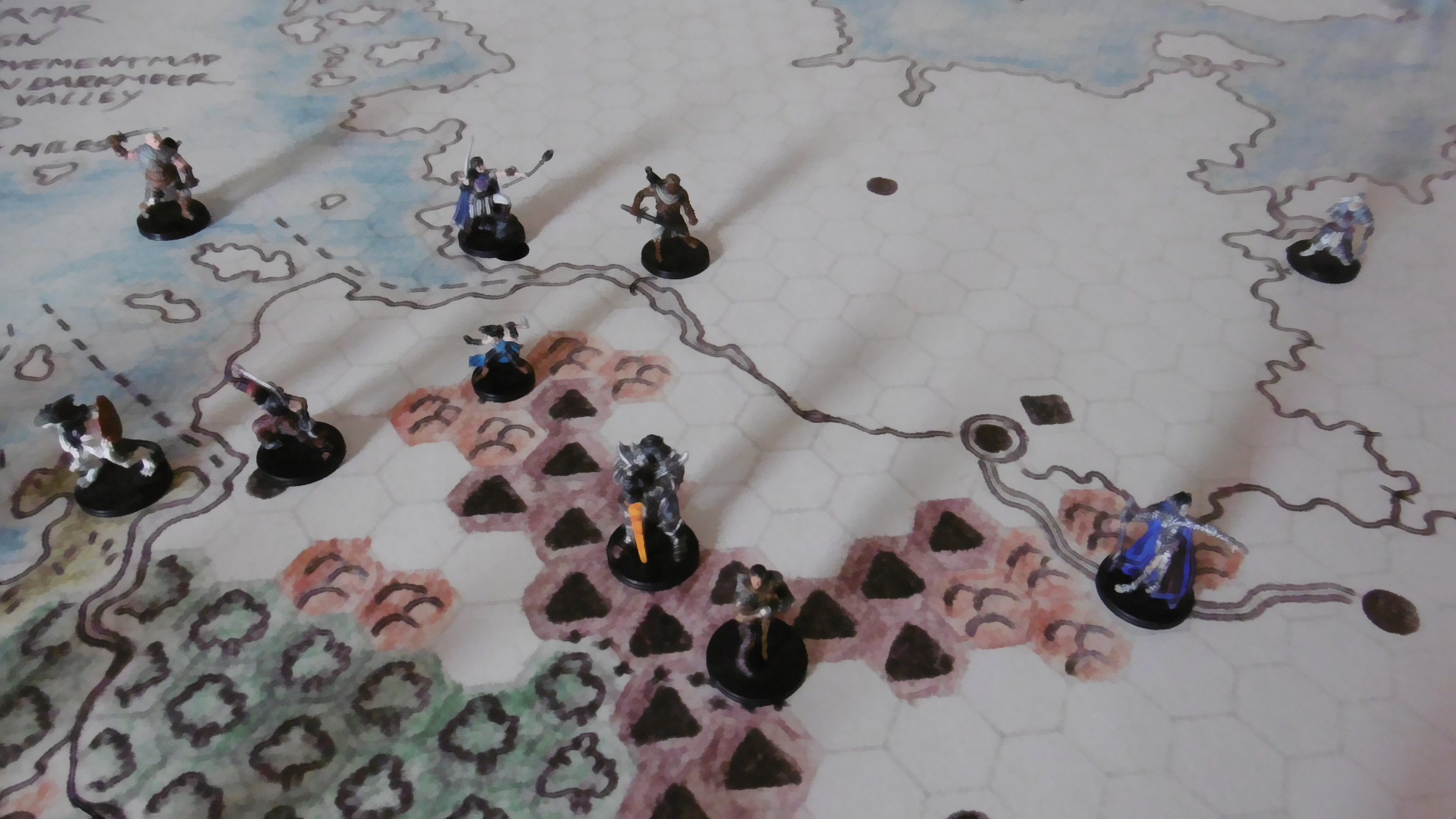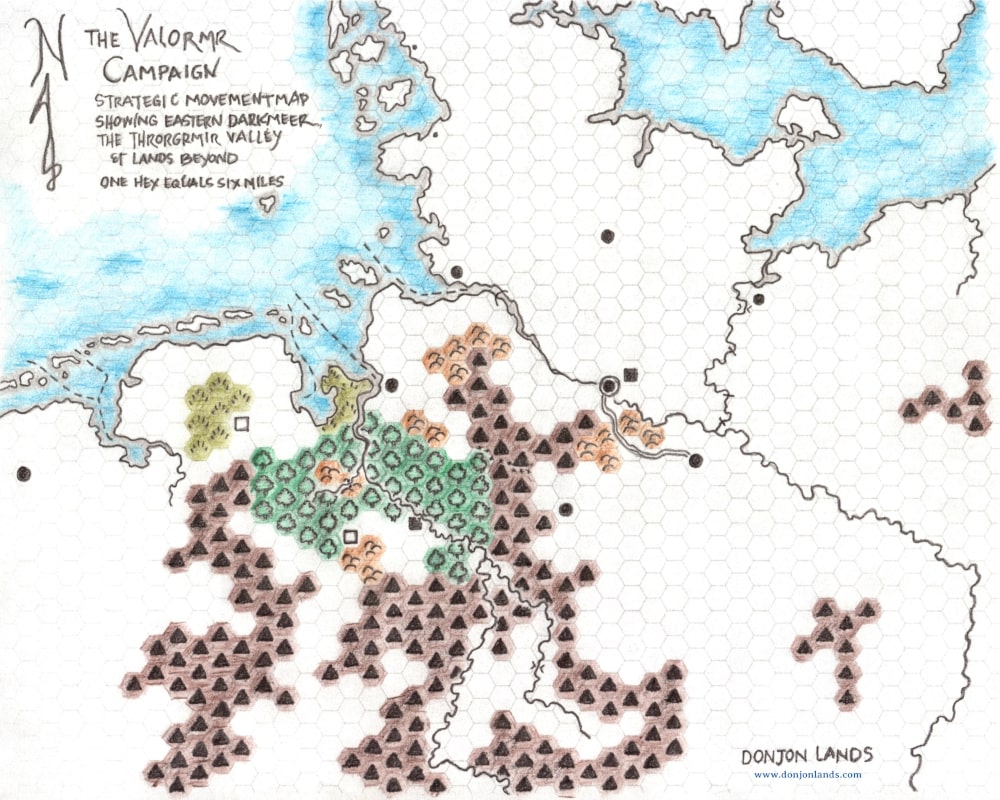“Hey, we’re walking…”—Russel Ziskey (Harold Ramis), Stripes (Reitman, 1981).

Scale
A one-inch hexagon grid overlays the strategic map. One hex equals six miles.
Figures
Each force is represented on the strategic map by its commander figure, which occupies one hex. The commander’s entire force is assumed to occupy the same hex.
Only one commander may occupy a hex at any time. The space provides the army with forage and ensures units do not become mixed. A commander figure cannot move through a hex occupied by another commander figure.
Advanced: Passage of Lines
In the advanced game, a force may move through a hex occupied by a stationary allied force but may not stop on it. If enemy contact is made during a passage of lines, both forces are considered unformed.
Turns
Since many fantastic creatures may move in darkness and sailed vessels may also move throughout the night, a turn is defined as 24 hours, beginning at daybreak and divided into two periods: day and night. In some case, each period may be further broken into half-periods. These half periods are called morning, afternoon, evening, and night.
Light-sighted creatures prefer to move in the day period, while dark-seeing creatures may move in either period or split their movement, making half a move during each period.
Simultaneous Moves and Contested Hexes
All moves for a period, day or night, are simultaneous. In the case where two or more forces may move into the same hex at the same time, the force with the fewer number of figures moves into the hex. The figure count includes only troop figures. It does not count figures representing individuals, like leaders, heroes, wizards, and trolls.
If the number of figures on each side is equal, the force with the most move points remaining. If it’s still a tie, the commander with the most daily move points. Still a tie—dice for it.
Note: The case might arise in which cavalry gains the contested hex and continues movement, thus allowing the other force to move into it.
Reading Map
The remainder of Strategic Movement is divided into four parts.

Pingback: Terrain Effects – DONJON LANDS